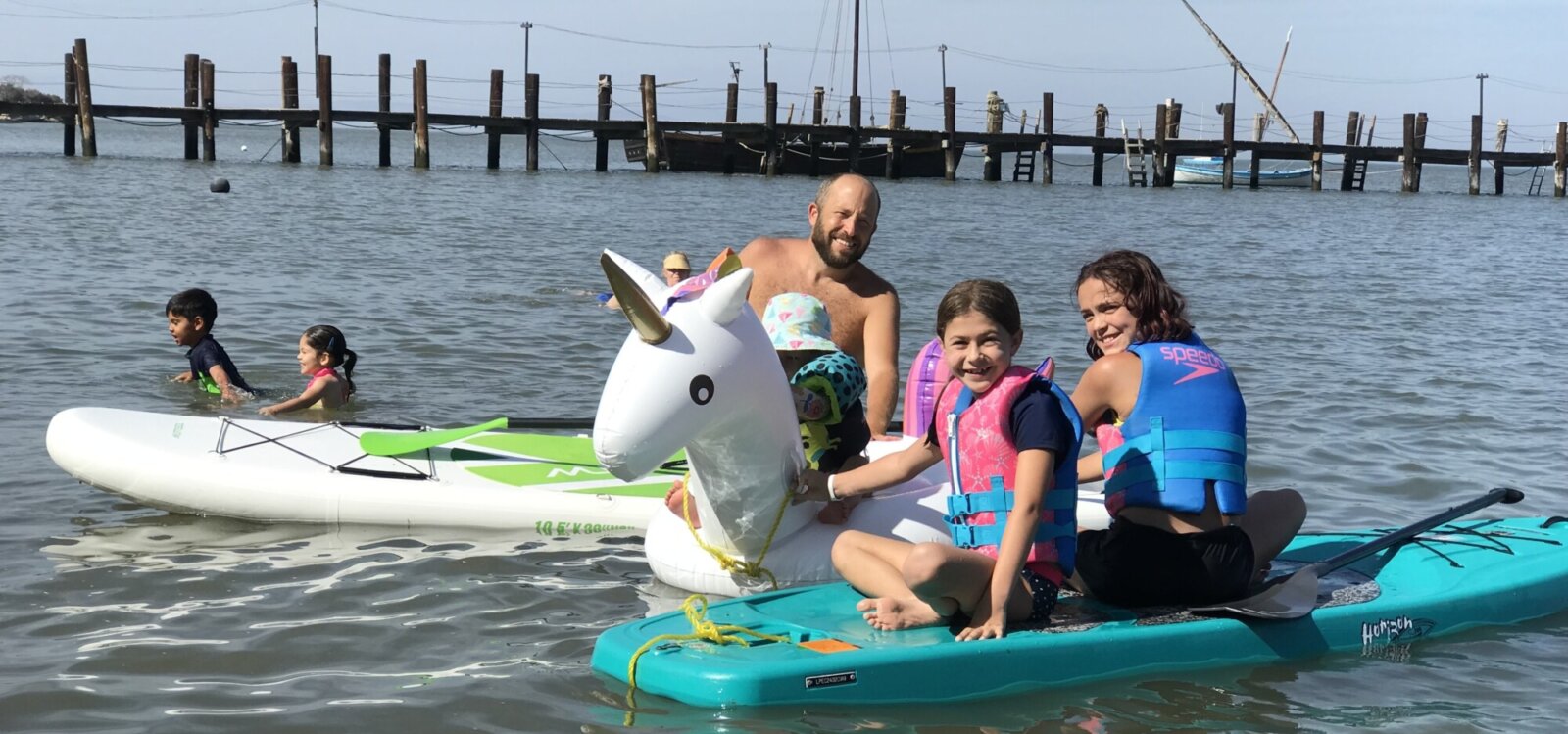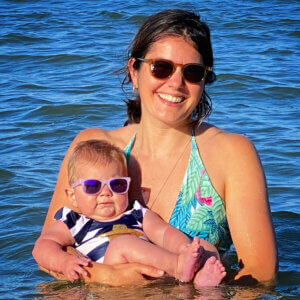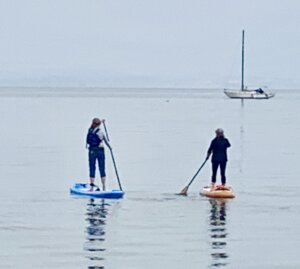
Water-Safe Summer
Our in-house expert shares smart tips on staying safe in and on the water at China Camp.
When temperatures warm up in summer, the bay waters bordering China Camp look mighty enticing. While jumping in or pushing off in a kayak or paddle board can be awesome ways to play at the park, it’s important to keep a few safety tips in mind, especially since there are no lifeguards on duty. Here, Friends of China Camp park manager Chris Young, who has over 20 years of experience as a local sea kayak guide and instructor, shares his tips on how to reduce the risks when you’re enjoying the water.

Tip 1: Check tide charts. You pull up to the park, all ready to go for a swim or paddle, and see nothing but mud. “It’s a drag to get to the park hoping to swim or take out your stand-up paddle board or kayak, only to find an expanse of mud instead of water,” Chris says. The simple solution is to check the tide charts in advance. This is good advice not only to avoid the unwelcome surprise of the tide being too far out to swim or paddle, but also to gauge how swift the currents are. When the tide does come in or out, surprisingly swift currents can push you off course, even require a water rescue. Paddling or swimming against a strong tidal current can also be extremely tiring and put you at risk. A little advance planning is essential. For the least amount of current, aim for the “slack tide,” the period when the tide is neither going in or out.
“There are a number of great online resources for planning a local swim or paddle,” says Chris. “My favorite free resource is the Bay Area Sea Kayak Club’s BASK Trip Planner.” Chris notes that the planner shows you put-in sites, and includes tide and wind data and details on any safety advisories that maybe in effect.
In case you forgot to check charts in advance, or you want to check for a future visit, a tide chart is posted outside the China Camp Village Cafe, at the beachfront. (Thanks to volunteer and China Camp Beach regular George Thomas for keeping this important information up to date.)
Tip 2: Check the wind direction. Chris recommends testing the wind direction from shore, just before you head out onto the water. Offshore winds, blowing from land toward water, can make it tough to paddle or swim back to shore, so take them into consideration when you set out, and make sure you have enough energy to paddle yourself back in. Strong winds can also kick up waves which can swamp a small watercraft or challenge swimmers.
”If you’re new to paddling or not a strong swimmer, and it’s windy out, hug the shoreline,” advises Chris. “You’d be surprised how fast you can get blown further offshore, especially if you are new to kayaking or stand-up paddling.”

Tip 3: Wear a flotation device. Even if you can swim, wear a life-preserver or certified personal flotation device (PFD) when you’re on or in the water. Make sure everyone in your group, especially youngsters, are wearing PFDs too. (Inexpensive “floaties” don’t count).
Tip 4: Be prepared for the bay’s cold water, as well as sharp rocks and shells. Although shallow water near China Camp’s shoreline feels relatively warm in summer and fall, it’s significantly chillier deeper offshore. “The deep-water temperature of San Pablo Bay remains fairly consistent, typically somewhere between 50 and 55 degrees Fahrenheit,” Chris explains. That’s too cold for our bodies for more than a few minutes. Winds can cause further chilling.
If you’re stand-up paddling or kayaking, the general rule is to be prepared in case you fall in. If you’re heading further out to deeper waters or there’s a chilly wind, Chris advises wearing a wetsuit or dry suit. At the very least, wear layers of synthetic clothing (never cotton) that will retain body heat even when wet.
Chris also reminds anyone going into the water at China Camp to always wear tight fitting water shoes (i.e. no flip-flops) that won’t fall off or get pulled off in the mud. “There are sharp rocks under the surface and in the mud, so protect your toes and feet at all times.”
Tip 5: Share where you’re going with others, and stay in communication. Always tell someone on land where you plans, including when you plan to return. Pack a fully charged cell phone in a ziplock or dry bag (checking sporting goods stores), and attach it to your clothing. Use it to keep your contacts on shore updated if your plans change. Paddle or swim with a buddy if possible and agree to stay together. If you get in trouble, let someone know right away. Call 911 first, then let friends or family members know what’s happening.
Tip 6: Know your limits. If you’re new to paddle sports or swimming in the bay, start slowly, advises Chris. “Be conservative, cautious, and—above all else—be humble. Wind speed and direction, tides and currents, water and air temperature, and your own physical condition and energy—they all factor in and make each time on the water different, Chris explains. “Build upon your success and continue to learn from each outing.”
—by Chris Young/FOCC Park Manager and Harriot Manley/FOCC volunteer

